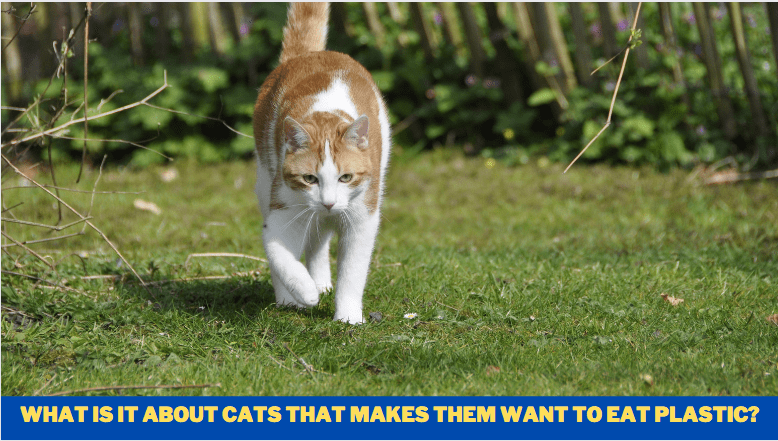What makes cats want to eat plastic?
Another day, another noise from another room, and when you peek into the other room to check, you find your feline companion gnawing on a plastic bag as if nothing has changed.
What you’re most likely wondering is why your cat enjoys consuming plastic and how you may distract your cat’s interest away from the potential dangers that come with it.
What’s the deal with plastic?
What is it about my cat that makes her try to chew plastic bags? Essentially, she does it because she enjoys it. There are several reasons why plastic bags appeal to your cat’s senses.
The crinkle of the plastic, the fragrance of the food that was housed within it drifting through the air, and the smooth surface under her paws are just a few of the reasons.
You may expect your little cat to have a comprehensive sensory experience.
It is also reported that cats are attracted to plastic bags, according to the Pet Health Network, because “many bags are also coated in substances such as cornstarch, [and] stearates (salts of stearate acid), or are made of animal by-products such as gelatin, which makes them more appealing to cats.”
A plastic bag catches your cat’s eye, and he immediately thinks: “Look! A treat!”
Additionally, your cat may chew on bags and other tougher plastic objects, such as straws and milk jug rings, to relieve anxiety induced by stressors such as the surroundings or medical conditions.
Moving to a new home, bringing a new pet or a new baby into the house, or even disease and age are all examples of life transitions.
Precautions must be taken to ensure public safety.
Because of a number of factors, cats and plastic bags are a potentially deadly mix.
Additionally, your cat could consume a foreign object that could restrict her airway or cause intestinal distress, or she could get the plastic handles wrapped around her neck, which could result in her being unable to breathe properly.
It is always best if you can keep plastic bags out of reach of your cat at all times in order to avoid these types of mishaps from occurring.
Extra bags should be stored in a closet, the garage, or another area where cats are not allowed. In the case of using the bags to line garbage cans or even her litter box (although you shouldn’t have any concerns about her gnawing on a small pan liner because most healthy cats do not associate their litter box with snack time), this may not be an option.
If you are unable to block off the room with the garbage can, consider purchasing a can with a lid that allows you to tuck the bag underneath it.
If she can’t get to it, she won’t be able to gnaw on it. This credo also applies to other potentially deadly playthings, such as electrical cords.
If you have any reason to believe that your cat is consuming plastic for reasons other than sensory gratification, schedule an appointment with your veterinarian to learn more about the burning question of why your cat is consuming plastic.
According to the Animal Behavior College, they can rule out any underlying medical disorders such as pica, a disorder that leads animals to consume non-food objects like as plastic, rubber, or cloth.
Alternatively, pica could suggest a more serious condition such as feline leukemia. As a result, it’s a good idea to take your cat to the veterinarian as soon as possible.
Alternatives to Plastic
Distancing cats from plastic bags is accomplished through the use of stealth diversion tactics. Instead of trying to keep the seductive object out of her reach, offer her something she will find equally as appealing.
Toys such as food puzzles and ball mazes can help to stimulate her senses. Because she has a strong hunting instinct, soft cat toys that she may chase about the home would be appreciated by her. Dog toys, particularly tough, durable stuffed animals, are popular with cats as well as dogs.
Cats and plastic bags can be broken up in a number of ways, one of which is to provide your feline friend with her own safe chewing area.
Create a space where she can gnaw on cat snacks or play with cat toys until her teeth hurt. Growing her own vegetables is a healthy and enjoyable alternative to the use of unhealthy and potentially harmful plastic.
Cat parents may now add the act of eating plastic to their list of bizarre feline behaviours. Kittens are endearing because of their quirks and peculiarities.
Simply make an effort to discourage gnawing on plastic, limit the practice with safer alternatives, and schedule an appointment with your veterinarian to determine the cause of her chewing behaviours.
Fact-Finding:
Thanks for reading and have a great day! What makes cats want to eat plastic?
Please post your thoughts in the comments section if you have any. Please feel free to share!

